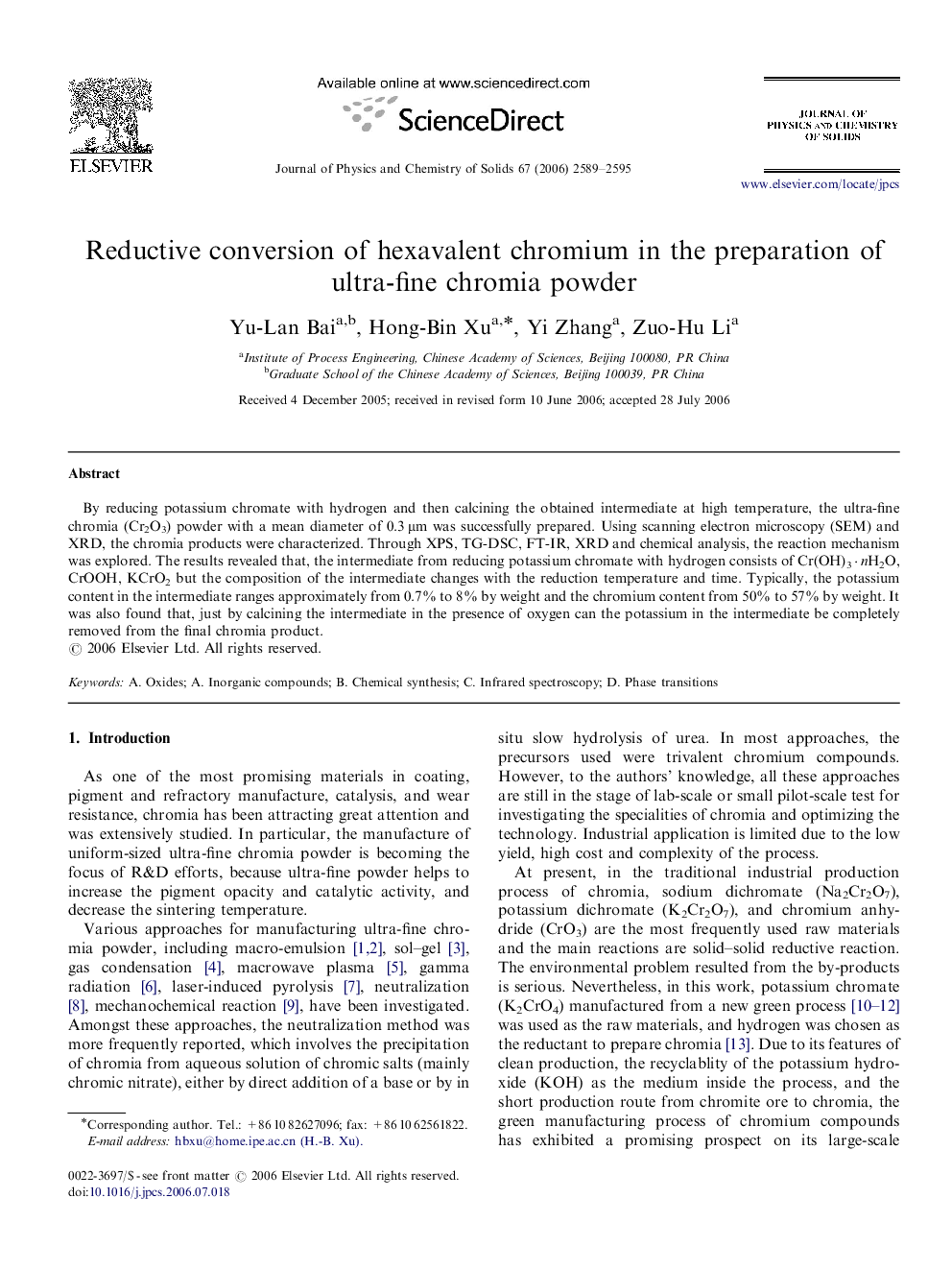| Article ID | Journal | Published Year | Pages | File Type |
|---|---|---|---|---|
| 1518693 | Journal of Physics and Chemistry of Solids | 2006 | 7 Pages |
By reducing potassium chromate with hydrogen and then calcining the obtained intermediate at high temperature, the ultra-fine chromia (Cr2O3) powder with a mean diameter of 0.3 μm was successfully prepared. Using scanning electron microscopy (SEM) and XRD, the chromia products were characterized. Through XPS, TG-DSC, FT-IR, XRD and chemical analysis, the reaction mechanism was explored. The results revealed that, the intermediate from reducing potassium chromate with hydrogen consists of Cr(OH)3·nH2O, CrOOH, KCrO2 but the composition of the intermediate changes with the reduction temperature and time. Typically, the potassium content in the intermediate ranges approximately from 0.7% to 8% by weight and the chromium content from 50% to 57% by weight. It was also found that, just by calcining the intermediate in the presence of oxygen can the potassium in the intermediate be completely removed from the final chromia product.
